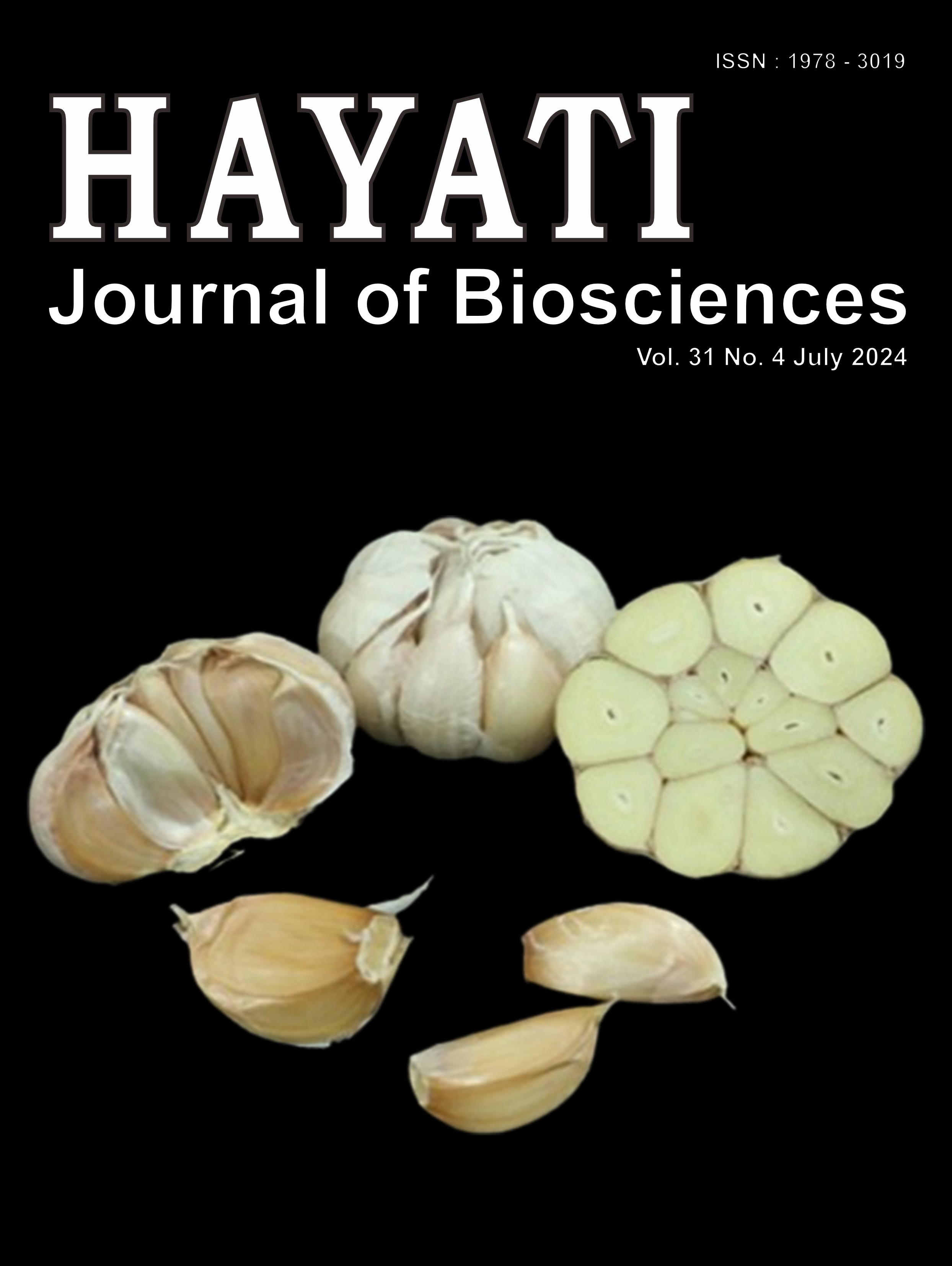Virulence Evaluation of Aeromonas spp. KS-1 Isolated from Kitchen Sponge using Omphisa fuscidentalis Larvae
Abstract
Aeromonas spp. causes the human diseases including diarrhea, gastroenteritis, and bacteremia. Aeromonas spp. can be found in kitchen sponge, one of the reservoirs for food-borne bacterial pathogens. Virulence study of Aeromonas spp. in vivo in animal model is important since the animal model can mimic manifestasions in human infections. Omphisa fuscidentalis was chosen for alternative virulence model, since they are in the same taxonomical order with the well-known infections model, Galleria mellonella. Bacterial isolation and selection of kitchen sponge used Brain Heart Infusion agar and Endo Agar, respectively. Bacterial virulence of KS-1 was injected into Omphisa fuscidentalis larvae. Survival percentage and melanization score of infected larvae were evaluated. Hemolymph of larvae with melanization score of 1 and 4 were stained with Giemsa method to observe the hemocyte changes. Bacterial identification of isolate KS-1 based on 16S rRNA sequence resulted in 96.9% identity to Aeromonas spp. strain VS7. Isolate KS-1 injection to O. fuscidentalis revealed higher bacterial dosage resulting more severe symptoms to the larvae according to survival percentage and melanization score. However, statistical analysis showed evaluation of melanization score could distinguish larvae with 106 and 107 CFU/larva dosage injection, while evaluation of survival percentage could not. Hemocyte of larvae with melanization score 1 had larger and more cytoplasmic vacuolization than the score 4 (healthy larvae). Omphisa fuscidentalis is an alternative of insect model for bacterial infections with survival percentage and melanization score as the evaluation. Cytoplasmic vacuolization of hemocyte can be used as larvae’s health indicator in a cellular level.
Downloads
Copyright (c) 2024 Noor Andryan Ilsan, Maulin Inggrain, Siti Nurfajriah, Melda Yunita, Jepri Agung Priyanto, Viqih Ramanda

This work is licensed under a Creative Commons Attribution-NonCommercial 4.0 International License.
HAYATI J Biosci is an open access journal and the article's license is CC-BY-NC. This license lets others distribute, remix, tweak, and build upon author's work, as long as they credit the original creation. Authors retain copyright and grant the journal/publisher non exclusive publishing rights with the work simultaneously licensed under a https://creativecommons.org/


















.png) IPB University
IPB University Department of Biology
Department of Biology The Indonesian Biological Society
The Indonesian Biological Society 

